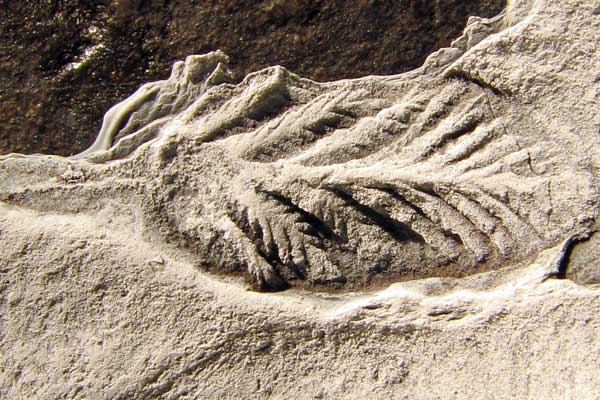
Bigger = better in prehistoric oceans
Published: January 24, 2014
A NASA research group featuring University of Toronto Mississauga professor Marc Laflamme has helped to explain why some prehistoric organisms evolved into larger animals.
Laflamme, an assistant professor with the Department of Chemical and Physical Sciences, and his colleagues at the Massachusetts Institute of Technology Node of NASA’s Astrobiology Institute suggest that height offered a distinct advantage to the earliest forms of multicellular life.
The study forms part of the NASA Astrobiology Institute’s research into the origins of life on earth and the possibility of life elsewhere in the universe.
For the study, Laflamme and his colleagues used a technique known as canopy flow modeling to reconstruct ocean currents operating in the deep seas some 580 million years ago.
The three-dimensional modeling helped to illustrate how dense communities of bacteria and multicellular organisms competed for nutrients in Pre-Cambrian seas.
According to the group’s research, published in the science journal Current Biology, primitive multicellular organisms known as Ediacara biota took on larger sizes in order to access nutrient-rich currents occurring above the seabed.
These enigmatic leaf-shaped life-forms grew up to a metre in height and are thought to be among the earliest assortment of large, multicellular life.
 Whether Ediacara represent the earliest animal lineages or an entirely extinct group of multicellular life is still a mystery, and an active research direction for Laflamme.
Whether Ediacara represent the earliest animal lineages or an entirely extinct group of multicellular life is still a mystery, and an active research direction for Laflamme.
The findings of the multinational group suggest larger Ediacara were able to absorb nutrients in higher quantities, which in turn helped to fuel the high energy costs associated with increased size.
The study also suggests that large Ediacara altered the flow of surrounding ocean currents, thus promoting further growth.
Laflamme (pictured right) said the results of the study may help to explain how relatively large multicellular organisms were able to compete against smaller, more-efficient bacterial films.
“Science has always had a difficult time explaining how and why the earliest forms of multicellular life got big,” Laflamme said. “This research helps to explain how we moved from a world ruled by microscopic bacteria to our world today where animals and plants dominate.
"The new methods used in our research may also help to explain how multicellular life competed during the Cambrian explosion of complex animals.”
Gareth Trickey is a writer with the University of Toronto Mississauga.



